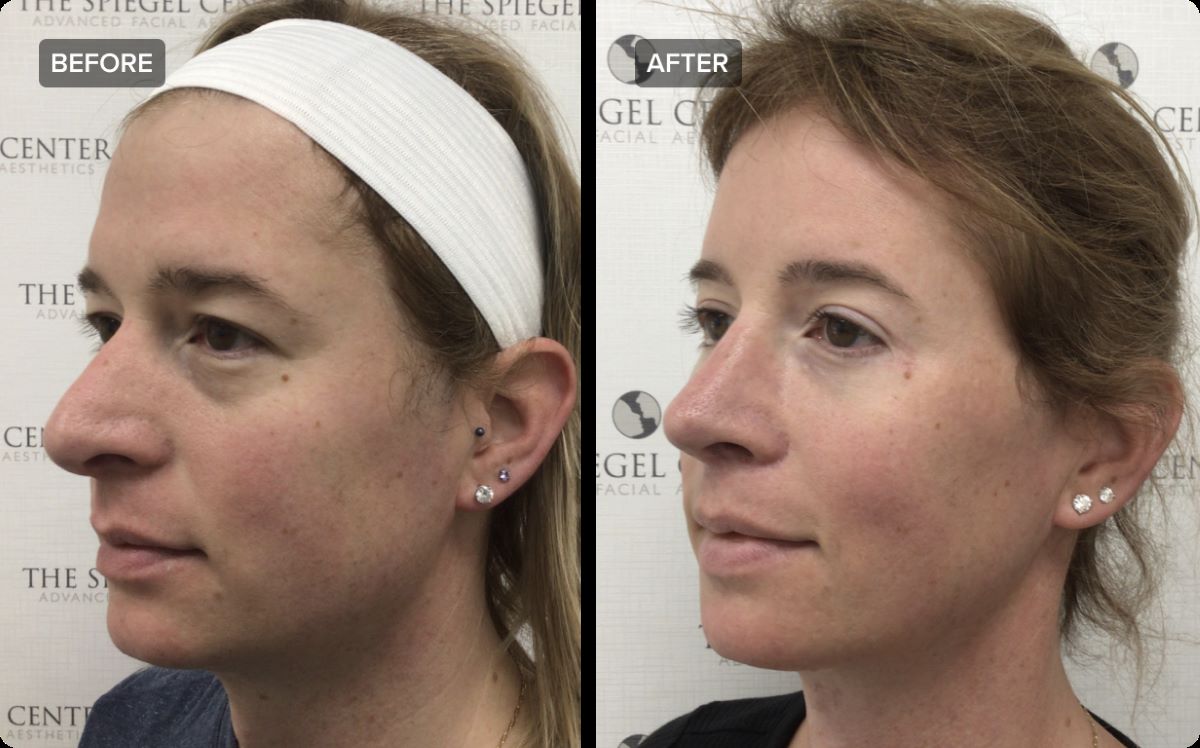Home>Finance>What Insurance Covers Facial Feminization Surgery


Finance
What Insurance Covers Facial Feminization Surgery
Published: November 22, 2023
Discover how insurance can help finance your facial feminization surgery. Learn about the coverage options available and get the financial support you need.
(Many of the links in this article redirect to a specific reviewed product. Your purchase of these products through affiliate links helps to generate commission for LiveWell, at no extra cost. Learn more)
Table of Contents
- Introduction
- Understanding Facial Feminization Surgery
- Importance of Insurance Coverage
- Types of Insurance that Cover Facial Feminization Surgery
- Criteria for Insurance Coverage
- How to Navigate the Insurance Approval Process
- Tips for Maximizing Insurance Coverage
- Common Challenges and How to Overcome Them
- Alternative Financing Options
- Conclusion
Introduction
Facial feminization surgery (FFS) is a transformative procedure for transgender individuals seeking to align their physical appearance with their gender identity. This comprehensive surgical approach involves a range of procedures, including forehead reconstruction, rhinoplasty, cheek augmentation, jaw contouring, and tracheal shave, among others.
While FFS can provide significant emotional and psychological benefits to transgender individuals, it is often a costly endeavor. The average cost of FFS can range from $20,000 to $50,000, making it financially inaccessible for many. As a result, insurance coverage for facial feminization surgery has become a crucial consideration for those pursuing this life-changing procedure.
In this article, we will explore the importance of insurance coverage for FFS, the types of insurance that cover this surgery, the criteria for insurance approval, navigating the insurance process, tips for maximizing coverage, common challenges, and alternative financing options. Understanding these aspects will empower transgender individuals to make informed decisions and access the financial support they need to undergo facial feminization surgery.
It is worth noting that insurance coverage for FFS varies significantly depending on the insurance company, policy, and individual circumstances. While some insurance providers explicitly exclude coverage for transgender-related procedures, others may cover these surgeries under certain conditions. Understanding the insurance landscape and being prepared to advocate for coverage is crucial in ensuring access to this important healthcare service.
Understanding Facial Feminization Surgery
Facial feminization surgery (FFS) is a combination of surgical procedures that aim to alter the facial features of transgender individuals to align with their gender identity. It is a highly personalized approach that takes into account the individual’s desired feminization goals and unique anatomical characteristics.
FFS typically involves a series of procedures that address various aspects of the face, including the forehead, nose, cheeks, jawline, and Adam’s apple. Some common procedures that are often performed as part of FFS include:
- Forehead Reconstruction: This procedure may include brow bone reduction, hairline advancement, scalp advancement, and forehead contouring.
- Rhinoplasty: Also known as a nose job, rhinoplasty involves reshaping the nose to create a more feminine appearance.
- Cheek Augmentation: Cheek implants or fat grafting can be used to enhance the appearance of the cheeks and create a more feminine contour.
- Jaw Contouring: This procedure aims to soften the jawline by reducing the size of the jawbone or reshaping the mandible.
- Tracheal Shave: Also known as Adam’s apple reduction, this procedure minimizes the prominence of the Adam’s apple, creating a smoother neck contour.
FFS is a complex and highly specialized form of plastic surgery that requires a skilled surgeon with expertise in facial anatomy and gender-affirming procedures. Before undergoing FFS, it is essential for individuals to have a thorough consultation with a qualified surgeon to discuss their goals, expectations, and potential risks.
While FFS is primarily associated with transgender women, it can also be performed for individuals who identify as non-binary or genderqueer. Each individual’s facial feminization needs and desires are unique, and the surgical plan is tailored accordingly.
It is important to recognize that FFS is not just a cosmetic procedure; it can play a significant role in an individual’s well-being and self-esteem. By modifying facial features to be more aligned with their gender identity, individuals often experience improved mental health, decreased dysphoria, and a greater sense of self-confidence.
Importance of Insurance Coverage
Insurance coverage for facial feminization surgery (FFS) is of critical importance for transgender individuals seeking this life-changing procedure. FFS is not a cosmetic luxury but a necessary step towards aligning their physical appearance with their gender identity. Here are several reasons why insurance coverage for FFS is crucial:
- Financial Accessibility: FFS can be an expensive endeavor, with costs ranging from $20,000 to $50,000. For many transgender individuals, this price tag is simply unaffordable. Insurance coverage allows individuals to access FFS without having to bear the entire financial burden themselves.
- Improved Mental Health: FFS is not only a physical transformation but also an essential aspect of psychological well-being for many transgender individuals. Alleviating gender dysphoria through FFS can significantly improve mental health outcomes, reducing anxiety, depression, and enhancing overall quality of life.
- Reducing Health Disparities: Limited access to FFS due to financial constraints can perpetuate disparities in healthcare. Insurance coverage helps bridge the gap, ensuring equitable access to gender-affirming surgical procedures for all transgender individuals.
- Medical Necessity: FFS is often deemed medically necessary for transgender individuals as it aligns their physical appearance with their gender identity. Many professional medical organizations recognize FFS as an important treatment option for gender dysphoria, further supporting the case for insurance coverage.
- Equal Treatment: Insurance coverage for FFS is an essential step towards ensuring equal treatment for transgender individuals. It signals a recognition of the importance of gender-affirming healthcare and breaks down barriers that contribute to discrimination and stigmatization.
Despite the numerous benefits of insurance coverage for FFS, it is important to recognize that the availability and extent of coverage can vary significantly among insurance providers and policies. Some insurance companies may explicitly exclude coverage for transgender-related procedures, while others may have specific criteria that need to be met.
Advocacy efforts continue to push for more comprehensive insurance coverage for gender-affirming surgeries, including FFS. Transgender individuals and allies play a crucial role in advocating for inclusive healthcare policies that recognize the importance of FFS as a vital component of transgender healthcare.
Types of Insurance that Cover Facial Feminization Surgery
While insurance coverage for facial feminization surgery (FFS) can vary widely, there are several types of insurance that may cover this transformative procedure. It is important to note that coverage options can differ depending on the insurance provider, policy, and individual circumstances. Here are some insurance types that may offer coverage for FFS:
- Private Health Insurance: Some private health insurance plans may cover FFS, particularly if the policy includes coverage for transgender-related healthcare services. It is essential to carefully review the policy documents or contact the insurance company directly to inquire about coverage options.
- Employee Health Plans: Many employer-provided health insurance plans offer coverage for FFS. These plans may be subject to certain criteria or require pre-authorization, so it is crucial to review the plan and consult with the insurance provider to understand the specific coverage details.
- Medicaid: Medicaid, a government-funded healthcare program for low-income individuals, varies in its coverage policies for FFS. Some states have expanded Medicaid coverage to include gender-affirming surgeries, including FFS. Eligibility criteria and coverage specifics can differ, so it is important to check with the state Medicaid program for more information.
- Medicare: Medicare, the federal health insurance program primarily for individuals over the age of 65, does not explicitly cover FFS. However, there may be some exceptions or coverage options under certain circumstances. Individuals on Medicare should consult with their healthcare providers and insurance administrators for more details.
It is important to keep in mind that insurance providers may have specific requirements and criteria for approving coverage for FFS. These may include documentation from healthcare professionals, evidence of gender dysphoria diagnosis, and adherence to specific treatment protocols. Understanding and meeting these requirements is crucial in navigating the insurance approval process.
Additionally, it is worth noting that insurance coverage for FFS is constantly evolving, and the availability of coverage may differ depending on the state or country. Keeping informed about policy changes and advocating for inclusive coverage is essential in expanding access to gender-affirming healthcare.
Ultimately, it is recommended to carefully review the insurance policy, speak with the insurance provider, and work with healthcare professionals experienced in FFS to determine the extent of the coverage and any out-of-pocket costs associated with the procedure.
Criteria for Insurance Coverage
Insurance coverage for facial feminization surgery (FFS) often comes with specific criteria that need to be met in order to qualify for coverage. While these criteria can vary depending on the insurance provider and policy, here are some common factors that may be considered:
- Diagnosis of Gender Dysphoria: Insurance companies typically require documentation of a diagnosis of gender dysphoria from a qualified healthcare professional. This diagnosis is often based on the Diagnostic and Statistical Manual of Mental Disorders (DSM) criteria and may require psychological evaluations or assessments.
- WPATH Standards of Care: The World Professional Association for Transgender Health (WPATH) provides guidelines known as the Standards of Care for the Health of Transsexual, Transgender, and Gender-Diverse People. Insurance providers may use these guidelines to determine the eligibility for coverage, including FFS.
- Pre-authorization and Referrals: Some insurance plans may require pre-authorization for FFS, meaning that the procedure needs approval before it can be scheduled. This often involves submitting documentation and obtaining referrals from healthcare professionals, such as primary care physicians or mental health specialists.
- Real-Life Experience (RLE) or Hormone Therapy: Insurance companies may require individuals to undergo a certain period of real-life experience (living in their desired gender role) or receive hormone therapy before qualifying for FFS coverage. These requirements aim to ensure that individuals have explored other aspects of gender transition before pursuing surgical interventions.
- Medical Necessity: Insurance coverage for FFS often hinges on the determination of medical necessity. This assessment considers factors such as the impact of gender dysphoria on mental health, the effectiveness of alternative treatments, and the potential benefits of FFS in alleviating dysphoria and improving overall well-being.
It is important to review the insurance policy and speak with the insurance provider directly to understand the specific criteria and documentation required for FFS coverage. Working closely with healthcare professionals experienced in gender-affirming procedures can also provide guidance in meeting these criteria.
Each insurance company and policy may have different requirements, so it is recommended to maintain open and transparent communication with the insurance provider throughout the process. This can help ensure that all necessary documentation is submitted and increase the chances of obtaining insurance coverage for FFS.
How to Navigate the Insurance Approval Process
Navigating the insurance approval process for facial feminization surgery (FFS) can be complex and challenging. However, with careful planning and preparation, you can increase the likelihood of obtaining insurance coverage. Here are some steps to navigate the insurance approval process:
- Review Your Insurance Policy: Start by thoroughly reviewing your insurance policy to understand the coverage and any specific requirements for FFS. Pay close attention to criteria such as pre-authorization, referrals, and documentation needed to support your claim.
- Document Your Diagnosis: Obtain a formal diagnosis of gender dysphoria from a qualified healthcare professional. Ensure that the diagnosis is documented and includes relevant medical records and psychological assessments.
- Consult with FFS Specialists: Seek out healthcare professionals experienced in facial feminization surgery. They can provide guidance on the documentation needed for insurance approval and help advocate for medical necessity on your behalf.
- Submit a Pre-Authorization Request: If required by your insurance plan, submit a pre-authorization request for FFS. Include all the necessary documentation, such as medical records, referral letters, and any supporting evidence of medical necessity.
- Follow Up with the Insurance Provider: Stay engaged with your insurance provider throughout the approval process. Contact them regularly for updates, confirm receipt of your documentation, and inquire about any additional information needed for the review process.
- Appeal if Necessary: If your initial claim is denied, don’t give up. Review the denial letter carefully and determine if there is an option to appeal the decision. Work closely with your healthcare providers to gather any additional information or documentation that can strengthen your case.
- Utilize External Resources: There are organizations and resources available to assist with navigating insurance and advocating for coverage. Transgender advocacy groups, legal aid clinics, and professional networks can provide guidance and support in the insurance approval process.
Remember to keep detailed records of all communication with your insurance provider, including the date and time of conversations, the names of representatives you speak with, and any important details discussed. This documentation can be valuable if you need to escalate your case or file an appeal.
It is important to approach the insurance approval process with patience and persistence. Be prepared for potential setbacks and delays, but remain determined in advocating for the coverage you deserve. With proper preparation and a proactive approach, you can navigate the insurance approval process and increase your chances of obtaining coverage for FFS.
Tips for Maximizing Insurance Coverage
Maximizing insurance coverage for facial feminization surgery (FFS) requires careful planning and proactive communication with your insurance provider. While coverage can vary depending on the insurance policy and provider, here are some tips that can help increase your chances of obtaining maximum insurance coverage for FFS:
- Thoroughly Understand Your Insurance Policy: Familiarize yourself with your insurance policy to understand the specific coverage and any exclusions related to transgender-related procedures. This knowledge will help you navigate the coverage limitations and requirements.
- Choose an In-Network Provider: Select a surgeon and healthcare professionals who are in-network with your insurance plan. In-network providers have negotiated rates with the insurance company, which can help reduce out-of-pocket costs.
- Obtain Clear Documentation: Ensure that your healthcare providers document every step of your FFS journey thoroughly. This includes documenting the diagnosis of gender dysphoria, treatment plans, evaluations, and any other necessary documentation required by your insurance provider.
- Seek Pre-Authorization: Submit a pre-authorization request to your insurance provider. This process allows the insurance company to review and approve the medical necessity of the procedure before it takes place. It is crucial to include all the required documentation and supporting evidence when submitting the pre-authorization request.
- Work with Experienced Professionals: Seek out healthcare professionals who have experience with FFS and have successfully navigated the insurance approval process before. They can provide guidance and support, ensuring that your documentation meets the insurance company’s criteria.
- Keep Detailed Records: Maintain organized records of all communication with your insurance provider, including dates, times, and the names of the representatives you speak with. This documentation can be valuable in case of any disputes or appeals.
- Appeal a Denial, if Necessary: If your initial claim is denied, don’t hesitate to appeal the decision. Carefully review the denial letter to understand why the claim was denied and gather any additional documentation or evidence to strengthen your case. Consult with your healthcare providers and consider seeking legal advice if needed.
- Consider Peer-to-Peer Conversations: In some cases, requesting a peer-to-peer conversation between your healthcare provider and the insurance company’s medical reviewer can help clarify any questions or concerns they may have, potentially leading to a more favorable outcome.
Remember to always communicate openly and honestly with your insurance provider. Be prepared to advocate for the importance of FFS as a medically necessary procedure for your well-being and quality of life. Understanding your rights as a policyholder and working with knowledgeable professionals can significantly increase your chances of maximizing insurance coverage for facial feminization surgery.
Common Challenges and How to Overcome Them
When pursuing insurance coverage for facial feminization surgery (FFS), there are several common challenges that individuals may encounter. However, with persistence and proper strategies, these challenges can be overcome. Here are some common challenges and tips for navigating them:
- Insurance Exclusions: Many insurance policies explicitly exclude coverage for transgender-related procedures, including FFS. To overcome this challenge, review your policy and consider advocating for policy changes with your employer or insurance company. Support from transgender advocacy groups can also be instrumental in pushing for inclusive coverage.
- Medical Necessity Determination: Insurance providers may require evidence of the medical necessity of FFS, such as documentation of gender dysphoria diagnosis and mental health impact. To overcome this challenge, work closely with healthcare professionals experienced in FFS who can provide thorough documentation, explaining the psychological and emotional benefits of FFS in alleviating gender dysphoria.
- Pre-Authorization Delays: The pre-authorization process can often be time-consuming, with potential delays in receiving approval. To avoid delays, ensure that all required documentation is complete and submitted accurately. Follow up with your insurance provider regularly to check the status of your pre-authorization request and provide any additional information that may be required.
- Claim Denials: It is not uncommon for insurance claims for FFS to be initially denied. If your claim is denied, carefully review the denial letter to understand the reasoning. Consult with your healthcare providers and consider submitting an appeal, providing any additional evidence or documentation that strengthens the case for medical necessity.
- Out-of-Network Surgeons: Insurance policies often have different coverage levels for in-network and out-of-network providers. If your preferred surgeon is out-of-network, consider appealing to your insurance provider to cover them as an in-network provider. Consult with your surgeon to determine if they are willing to work with you and negotiate with the insurance company to maximize coverage.
- Limited Coverage Amount: Some insurance policies may provide coverage for FFS but have a limit on the amount they will reimburse. To overcome this challenge, carefully consider the costs of FFS procedures and budget accordingly. Explore alternative financing options, such as loans or personal savings, to supplement insurance coverage and ensure the financial feasibility of FFS.
Remember to maintain open communication with your insurance provider throughout the process. Educate yourself about your rights as a policyholder and stay informed about any updates or changes to insurance coverage policies. Seek support from transgender advocacy groups who can provide resources and guidance in overcoming the specific challenges you may face.
While the insurance approval process for FFS can be challenging, persistence and a proactive approach can increase the likelihood of obtaining the coverage you need. Stay positive, be prepared, and seek support from professionals and advocacy networks to overcome these challenges and achieve your goal of accessing FFS.
Alternative Financing Options
While insurance coverage can greatly assist in financing facial feminization surgery (FFS), it may not cover the full cost or be available to everyone. In such cases, exploring alternative financing options can help make FFS more financially attainable. Here are some alternative financing options to consider:
- Savings and Personal Budgeting: Start by assessing your current financial situation and explore the possibility of saving for FFS. Create a budget that allows you to set aside a portion of your income each month specifically for this purpose. Cut back on discretionary spending and redirect those funds towards your FFS savings goal.
- Healthcare Financing Programs: Many plastic surgery and healthcare financing companies offer loans specifically designed for elective procedures like FFS. These loans often have favorable interest rates and flexible repayment options. Research and compare different financing programs to find one that suits your needs.
- Credit Cards: If you have access to credit cards with favorable terms, they can be utilized to cover FFS expenses. However, exercise caution and ensure you have a plan in place to pay off the balances responsibly to avoid high interest charges.
- Medical Credit Cards: Some financial institutions offer specific credit cards designed for medical expenses, such as cosmetic procedures. These cards may offer promotional financing options or lower interest rates compared to regular credit cards.
- Personal Loans: Explore personal loan options from banks or credit unions. Personal loans can provide a lump sum to cover your FFS costs, and you can repay them in monthly installments over a specified term.
- Crowdfunding: Crowdfunding platforms like GoFundMe or Kickstarter can help you raise funds for your FFS procedure. Share your story, set a clear financial goal, and reach out to friends, family, and supportive communities to contribute. Remember to express gratitude and keep your donors informed about your progress.
- Charitable Organizations and Grants: There are various charitable organizations and grants that provide financial assistance specifically for transgender individuals seeking gender-affirming surgeries. Research and reach out to these organizations to see if you meet their eligibility criteria for funding.
When exploring alternative financing options, it is essential to weigh the costs and benefits of each option while considering your personal financial circumstances and goals. Be mindful of interest rates, repayment terms, and any associated fees. Remember that financing options may differ depending on your location, so research options available in your country or region.
Additionally, consider consulting with your healthcare provider or surgeon. They may have information about financing programs specifically tailored to FFS or partnerships with financial institutions that offer favorable terms.
Remember that alternative financing options are meant to supplement traditional insurance coverage or personal savings. It is crucial to carefully consider your financial situation and prioritize responsible financial planning to ensure that you can afford the costs associated with FFS without incurring excessive debt.
Conclusion
Facial feminization surgery (FFS) is a transformative procedure that can have a profound impact on the lives of transgender individuals. It helps align their physical appearance with their gender identity and can contribute to improved mental health and overall well-being. While insurance coverage for FFS varies, navigating the insurance landscape and exploring alternative financing options can make this life-changing surgery more accessible.
Understanding the importance of insurance coverage for FFS is crucial. It not only provides financial accessibility but also ensures equal treatment and reduces health disparities by recognizing FFS as a medically necessary procedure. By advocating for inclusive policies and working with healthcare professionals experienced in FFS, individuals can increase their chances of obtaining insurance coverage.
However, in cases where insurance coverage falls short, alternative financing options can help make FFS more feasible. Personal budgeting, healthcare financing programs, credit cards, personal loans, crowdfunding, and charitable organizations are avenues to explore. Careful consideration of the costs, interest rates, and repayment terms is essential in determining the best option for individual circumstances.
Ultimately, determining the best course of action for obtaining insurance coverage or financing FFS requires thorough research, proper documentation, persistence, and support. The journey towards FFS may present challenges, from navigating the insurance approval process to overcoming financial barriers. However, by staying informed, seeking guidance, and advocating for inclusive healthcare policies, individuals can take important steps towards achieving their goal of facial feminization.
It is crucial to approach the process with patience, determination, and self-advocacy. Remember that each individual’s journey is unique, and the support of communities, healthcare professionals, and transgender advocacy groups can provide a vital network of assistance throughout this transformative process.














